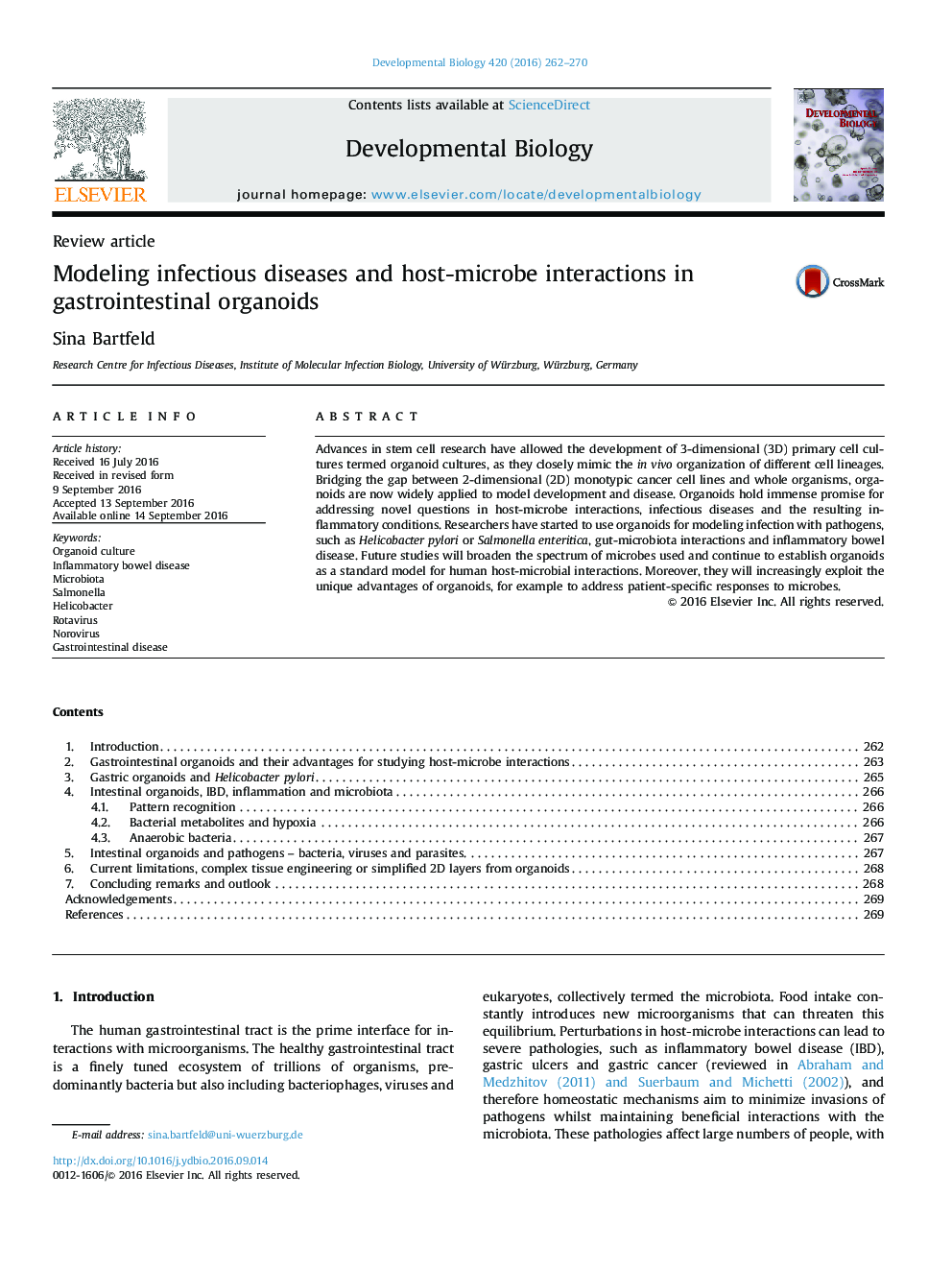| کد مقاله | کد نشریه | سال انتشار | مقاله انگلیسی | نسخه تمام متن |
|---|---|---|---|---|
| 5531984 | 1549563 | 2016 | 9 صفحه PDF | دانلود رایگان |
- Organoids are now used widely to study infection biology, interaction with the microbiota and associated diseases such as IBD.
- Organoids contain differentiated host cells crucial for interaction with microorganisms.
- Organoids provide host cells for microorganisms which were previously difficult to culture.
- Simplified 2D layers and engineered tissues complete the spectrum of new model systems.
Advances in stem cell research have allowed the development of 3-dimensional (3D) primary cell cultures termed organoid cultures, as they closely mimic the in vivo organization of different cell lineages. Bridging the gap between 2-dimensional (2D) monotypic cancer cell lines and whole organisms, organoids are now widely applied to model development and disease. Organoids hold immense promise for addressing novel questions in host-microbe interactions, infectious diseases and the resulting inflammatory conditions. Researchers have started to use organoids for modeling infection with pathogens, such as Helicobacter pylori or Salmonella enteritica, gut-microbiota interactions and inflammatory bowel disease. Future studies will broaden the spectrum of microbes used and continue to establish organoids as a standard model for human host-microbial interactions. Moreover, they will increasingly exploit the unique advantages of organoids, for example to address patient-specific responses to microbes.
Journal: Developmental Biology - Volume 420, Issue 2, 15 December 2016, Pages 262-270
